By SHAAN GRESSER
I remember Stuart Trueman’s comment about preparing for kayaking expeditions: if you made it to the start of your trip this was probably the most important moment of the expedition! That’s because inevitably there are many obstacles to overcome before a single paddle stroke is taken. When I decided in late 2009 to cross Bass Strait I had no idea of the obstacles I had to jump, bump and trip on before landing at Little Musselroe Bay, Tasmania on the 25th February 2011. Before making my first paddle stroke on the famous Bass Strait I had to contend with a smashed and destroyed kayak, a few shoulder dislocations, helicopter rescues, surgery, a rare nerve syndrome that claimed the use of two fingers and one false start! As they say, what doesn’t kill you just makes you stronger.
Do I paddle today? I faced many challenges kayaking Bass Strait, but this was probably the toughest and the most rewarding. Making that decision each morning, with no paddling buddy to talk it through with, share the risk, or back me up. Each morning the decision rested on me and I had to face the consequences alone.
Despite all the BOM weather predictions, the different weather scenarios, wind forecasts, sea states and tidal predictions, weather was never a sure thing. Most times the BOM was spot on, but some days the weather just did its own thing or just changed in an instant. There was always a risk relying on a weather forecast and every day I had to take the gamble alone: Do I paddle today?
Perfect weather had accompanied Dad and I on our drive to my departure point at Port Welshpool, Victoria in December 2010. The night before the start, it was excitement that first kept me from sleep then it was lightning, rain and a howling westerly. Then anxiety hit me, my heart was beating so fast I felt like it was trying to escape my chest. The build up to this moment – the accident, surgery, difficult recovery, nerve damage, training paddles, planning and organising equipment – had all fallen on this moment, the anxiety was about as intense as I’ve ever felt. Do I paddle today?
I checked the weather forecast. No. It seemed that the good weather window had closed, so I made the call to abandon this attempt to cross Bass Strait. Dad was amazing; he just said this wasn’t the time so we drove back to Sydney without complaint. The experience was invaluable as I went home and contemplated how I felt. With hindsight my little ‘stress rehearsal’ was a real advantage in preparing me mentally for the trip.
In February 2011, we were back at Port Welshpool. This time the weather was perfect, even the tides were lining up well for a comfortable paddle down the eastern side of Wilsons Promontory. Dad watched in amazement as I somehow loaded a mountain of gear and food into my tiny Mirage 530.
The last time dad had seen me in a kayak was when I was 12 years old, and now he was about to watch me paddle off to Tasmania. I knew the courage that must have taken for him, so I tried to not whimper when I realised I had accidentally deleted all my waypoints and tracks after switching on my GPS. With a blank GPS screen, I just pointed my kayak in the direction of Tasmania, waved goodbye and off I went to the stunning Refuge Bay.
The consequence of nerves, a heavy kayak and a strong westerly got to me about 10km from shore, a pain in the right wrist probably from gripping the paddle too hard. My first case of tendinitis, it became just another thing I needed to manage and accept as part of the adventure.
Day 2 was to start from the pristine and deserted Refuge Cove. Do I paddle today? was answered by a strong south-westerly, which convinced me to stay and explore for three nights. This gave me time to walk to Tidal River, get some Ibuprofen for my wrist, and take in the beauty of the Prom.
On Day 4 the winds had blown over and it was time to take a leap of faith. I had to take my first hop off the mainland and cross 55km of exposed ocean to Hogan Island, a small grassy lump that you can’t see until you are well and truly committed. Despite the calm conditions, it took all my courage to keep the kayak pointing out to sea and battle the natural urge to turn back to the mainland. Hogan Island turned out to be one of the highlights of my trip. In a small worn hut built by the Flinders Island cattle graziers, I discovered a 20 year-old logbook. It contained the entries of those who came before me, including one by fellow kayakers Matt Bezzina and Mark Schroeder. They had left a little hello note to me a year earlier, it was a great and proud moment to finally be reading it.
Since the trip, many people have asked me if I got lonely or bored during those nineteen days alone. Honestly, I don’t think I ever got lonely, but on some of those crossings I felt quite alone. The feeling of isolation really hit me on Day 5 crossing from Hogan Island to Winter Cove on Deal Island.
Paddling into Hogan I had experienced my first little ‘white knuckle’ challenge with a small tidal race caused by strong currents surging between the twin islets just north of the main island. There was nothing like a bit of self-preservation to keep boredom at bay. Now getting into Winter Cove on Deal Island, even though I had a lot of faith in my Mirage 530, I was perfectly aware of what a nasty shore dump could do to a fully-loaded kayak. A year ago I had watched the demise of my previous Mirage 530, repeatedly crunched to destruction at the base of a cliff.
I tried catching a smaller wave to get through the dump zone. This worked until it died out a little too early. I heard the surge of a rising wave behind, sucking me backwards. In my next attempt, I just closed my eyes and edged the kayak. After the initial thump, I went sliding sideways up the beach. I came to a stop, covered in sand, relief.
I was tired and Winter Cove was misty and dark. I looked back at the angry surf. Whilst it was there, I would be stuck here. I ate and crawled into my sleeping bag feeling a little drained. The next morning I poked my head out of the tent. I was now looking at an island paradise! How could this be the same cove? Amazing what a good rest, food, sunshine and a change in swell can do! Now only a tiny wave broke on the beautiful beach of Winter Cove.
Do I paddle today? Not when there was Deal Island to explore! A great decision as it turned out, as it was not long before a strong SW began to blow. For the next two days I discovered more coves and the Deal Island museum. I also met some of the locals, Cape Barren Geese, Bennett’s Wallabies and the caretakers, New Yorkers Tim and Lyne. They were kind enough to invite me into their cottage for a lovely warm cuppa and to re-charge the 50w external battery which was powering my mobile phone.
The challenge presented itself when I realised that the tides for my crossing from Deal to Flinders Island were going to be particularly strong. They would be steaming around the northwestern edge of Flinders Island as I approached, potentially creating some challenging conditions. I needed to aim well north as I approached Flinders to compensate for the strong flooding tide that would drag me south and past Flinders if I didn’t plan for it.
The morning of the crossing dawned. The pre-dawn starts were always tough, and this was no different: it was dark, the wind was still blowing from the southwest as it had been for the past two days and I definitely didn’t want it on this crossing. The wind forecast was for 5 to15 knots from the northeast, I needed this for the paddle, as the wind with the tide would be manageable. It was then that my Do I paddle today? was again tested. I couldn’t really see what the ocean was like until some distance away from land. I counted on the accuracy of the forecast, which up to this point had been pretty spot on, but would it hold? As I started to paddle, I started to doubt my decision. It’s difficult not to have thoughts of turning around. A wrong decision could stuff the whole trip.
These Do I? or Don’t I? paddle decisions were the stand-out moments of my adventure. It really focuses the mind and adds a depth of clarity rarely felt in daily life. I suppose that was what added to the adventure and sense of achievement of doing this on my own.
I had to focus on crossing the longest of the eastern Bass Strait crossings to Flinders Island. Thankfully a few kilometres from Deal things began to settle and it was looking like a beautiful day to do the crossing. On final approach, I stuck to my plan to be well north of Craggy Rock. 10km from Killicrankie Harbour, the normal landing spot for Flinders Island, the flood tide was in full swing. The wind was 15 knots from the northeast. Everything was in my favour so I decided to continue south around Cape Franklin and head for a tiny beach on Roydon Island, a small island which sits about 2km west of Flinders. After ten hours and 73km I got out of my kayak and watched the sunset. I finally relaxed for the first time since leaving Port Welshpool and celebrated with the remains of my red wine.
After spending two nights on Roydon Island I decided to continue south and spend the night at Emita, about half way down the west coast of Flinders. But I didn’t get very far. The forecasted 15 to 20 knot NE turned out to be a 27 knot gusting to 40 NE. I didn’t realise this until after paddling as hard as I could, giving up 4km and an hour and a half later. I had made it across to Flinders Island to the northern end of Marshall Bay and pulled into a little beach just past Bun Beetons Point. A lady who had watched me struggle around the point invited me up for a tea break. Well, coffee turned into a lunch of champagne and fine food, which turned into a beautiful dinner of local wallaby with friendly locals.
Finally on Flinders Island, I ended up spending seven days there due to the weather. All but one of those days the wind blew hard. My forced stay was an unexpected joy, my stay on Flinders became all about the friendly and interesting people I met and included a tour of the island by both land and air.
The following day I took advantage of a lull in the weather and headed for Trousers Point, about a 45km paddle. I needed to make the most of it as strong SW winds were forecasted for the following three days. Along the way I experienced more sea fog. However as I approached the final 10km the fog started to lift exposing small glimpses of Mt Strzelecki. After a tiring day I rounded the corner into the small bay on the southern side of Trousers Point, it was calm and golden now with an impressive mountain backdrop. Making camp, a very strong and sudden wind from the SW began blowing straight into the bay and didn’t stop blowing for four days. I tied my kayak to some wooded stairs where I dug it out four days later.
The next day I hitched a ride into Whitemark with Wayne, a local field officer for the Tasmania Parks and Wildlife Service. Tagging along on his rounds, I got a tour of the island, visiting all parts including Killicrankie and the east side of the island. After a brief stop at the hospital to have an open wound on my lower back checked, and a celebratory beer at the Whitemark pub, I met some more friendly locals, Lois, owner of the general store, and Leedham Walker who turned out to be a very interesting and lovely third generation islander.
After a windy and wet night in the tent, the lovely Leedham tracked me down the next day and invited me to stay with him and his wife Judy. I was supposed to be roughing it, suffering in the wilds of the fierce Bass Strait. Instead I was enjoying warm showers and home cooked meals, ah the benefits of solo travelling: adapt and survive, I say. Just when I thought it couldn’t get any better, Leedham showed me his Cessna and then took me for a spin over the island. We flew out of Whitemark and headed south to take a look at my route to come, via Cape Barren and Clarke Islands. On the way south we flew over Trousers point to check on my kayak, I was relieved it hadn’t blown away.
My last afternoon was spent climbing the 750m high Mount Strzelecki gazing down at the spectacular views. I started making my way further south towards Banks Strait, the final crossing to Little Musselroe Bay on mainland Tasmania.
Leaving Flinders Island for Cape Barren Island turned out to be another of those Do I paddle today? moments. The conditions weren’t great but good enough to take on the 15km across Franklin Sound. After a brief stop at the Cape Barren township I headed off for Thunder and Lightning Bay, my proposed camp on the southern side of the island. After setting off the winds built up to over 20 knots which made me a little nervous but I knew I would be off the water in less than two hours so I didn’t worry too much, until I approached the cape.
Before I really knew it, I found myself right on top of a shallow reef with exposed rocks and standing waves. I had made a ‘school girl error’ with my casual departure and I hadn’t bothered to check the tides. The tide was streaming towards the east and the wind blowing in from the west and there was a nasty reef under me. This was my ‘whitest knuckle moment’ of the trip, a twenty minute ordeal which really tested me. After all my planning for the big crossings ironically it was this moment that almost had me. I felt alone and isolated and remember visualising my roll in anticipation of capsizing. I’ve never been more focused and in the moment.
Fortunately the breaking waves were not as powerful as they looked and I reached safety when I rounded the corner into the quiet lee of Thunder and Lightning Bay. It was a definite ‘kiss the ground’ moment when I landed. It felt like my life had been enriched by the intensity of the moment, it was like someone had turned up my sensation dial as I absorbed the beauty of the late afternoon.
My last three days between Thunder and Lightning Bay on Cape Barren Island and Spike Cove on Clarke Island were beautiful. The forecast for the next few days was for light winds and sunny skies so I felt confident that I would have a clean run into Little Musselroe Bay.
Heading for Clarke Island, I first pulled into Preservation Island for the afternoon. Thanks to the calm weather, it was straight out of a holiday brochure: beautiful clear water with white sandy bays surrounded by the characteristic bright orange tinged boulders. My next stop was Spike Cove on Clarke Island. There I found a small little beach tucked away on the far end of the cove. I found space for about one tent, a protected little spot where I enjoyed my final two nights in Bass Strait.
Crossing Banks Strait on Day 19 was the final challenge. Throughout my trip I was able to get the weather forecast from the Bureau of Meteorology (BOM) using my smart phone, via the Telstra 3G reception. Sometimes, after landing, I had to hunt for reception, but I was able to pick up something at all stops along the way. This made the crossing easier than having to rely on set radio announcements. Ultimately my world was reduced to caring about two things: getting weather information and making decisions about when to paddle.
Although the shortest of all, I took this final crossing pretty seriously because the tidal streams here are stronger than elsewhere along the whole route. At their peak, beyond the speed at which I can paddle.
I had the usual nerves when I woke up early, but I was feeling good. I set off towards Lookout Head where I would make my dash across the strait to Little Musselroe. As I paddled away from the lee of the island I started to see a line of white water a few 100m ahead of me. The wind pushing against the outgoing tide causing the sea to rise up and form white caps and confused conditions. I’ve never seen the sea quite like this. From calm to rough – it was that quick.
Days previously I learnt that it can look worse than it is. Ultimately the only way I would know how rough it really was would be to charge on in. Thoughts of turning back punctuated my mind but I was committed. The defining moment came when, amongst the leaping breaking waves, a little penguin popped up beside me. It appeared to be having a ball and enjoying the bouncy conditions. Hey, I thought, I should be having fun also! As soon as I began to relax, everything became a lot easier.
Some hours later I began to make out the distinct shape of Swan Island and behind it my final destination and, hopefully, my dad with a big welcome. I paddled into the inlet at Little Musselroe eagerly looking across the shore for him. I recognised my van parked not far from the water, but where was dad? Confused I semi-ceremoniously made the trip’s final paddle strokes and pulled up on shore. I walked up to the car but still no one. Not quite the reception I had in mind.
A guy on a tractor appeared. “Ah, you must be that chick paddling across the strait. Your dad’s waiting for you up on the headland.” With the mystery solved, I walked up to my dad as he sat anxiously looking out to sea. A direct crossing from where I left from Clarke Island would logically have me come in on the west side of Swan Island, not the east, and this was the direction my father was keenly observing.
“Cripes,” he shot up, “where’d you come from?” We posed for a well-earned team hug. A fitting ending for my solo journey that was less about fleeting glory, and all about inner discovery and the experience of real adventure.
Acknowledgments
Solo adventures are hardly ever achieved solo. My trip critically involved the advice, support and encouragement of key friends and family. I especially would like to thank Andrew Eddy for the in-depth discussions about the route, the weather and the tidal streams. I was also grateful for Andrew’s advice and support during the crossing. Rob Mercer was a very supportive inspirer and another valued source of advice. I also thank Rob for providing the many opportunities, from which so many of us in the club have benefitted, to improve our skills and experiences on the ocean. Ian and Dave at Mirage were wonderful at providing me with my custom Mirage 530. And thanks to Bettina Otterbeck for bravely taking on my journal.
I had a bumpy ride the year leading up to the crossing, with various setbacks and challenges. It all made me realise how valuable those around me are, friends like Rae, Neil, John, Guy, Paul and to my wise friend Pax who showed me the way; thank you. Thanks to the friendly people on Flinders Island, especially Leedham and Judy Walker, Allen and Louise and Frank and Joy, Karen and the Box Thorn crew, who all made my Flinders experience a very memorable one.
And ultimately to the guy and gal who I know endured restless nights and premature ageing: my wonderful mum and dad, thank you so much.
 (Contents not yet available online)
(Contents not yet available online) (click image above for March 2103 contents)
(click image above for March 2103 contents)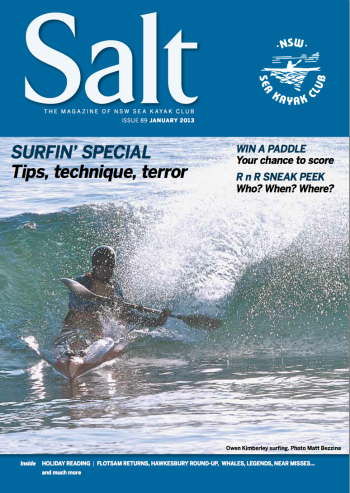 (click image above for Jan 2013 contents)
(click image above for Jan 2013 contents)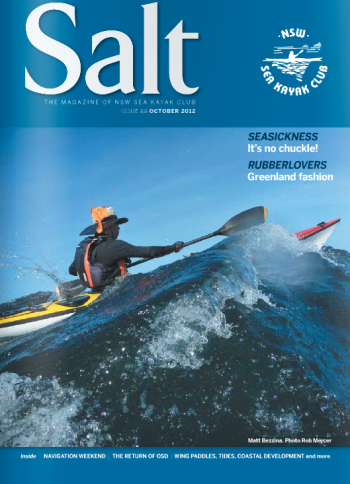 (click image for October 2012 contents)
(click image for October 2012 contents)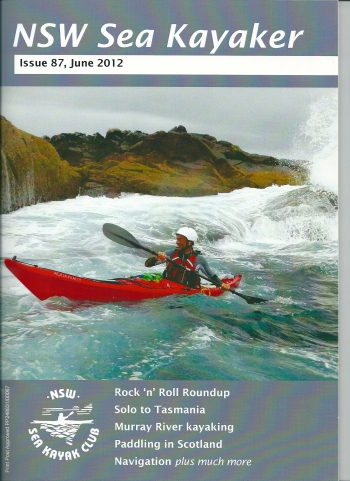 (click image for June 2012 contents)
(click image for June 2012 contents)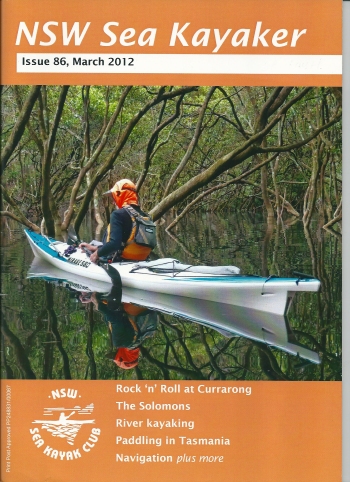 (click image for March 2012 contents)
(click image for March 2012 contents)
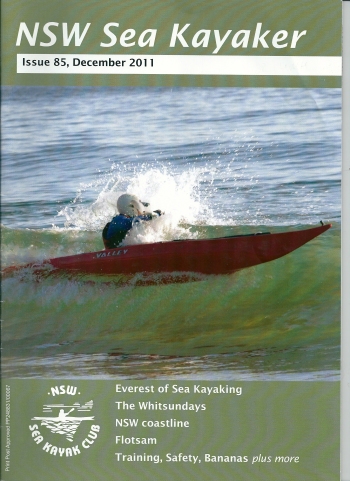
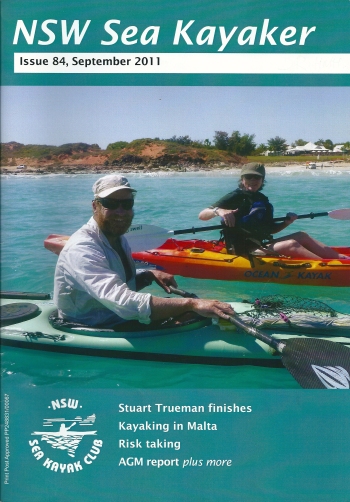
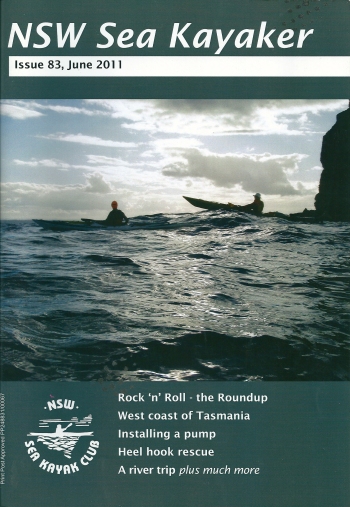


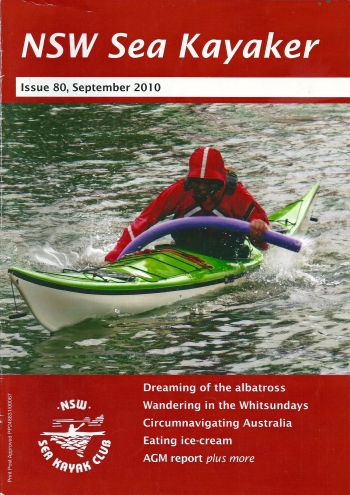
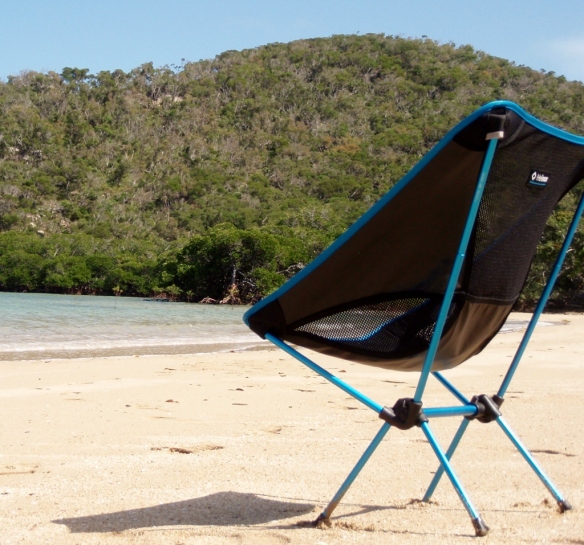
You must be logged in to post a comment.